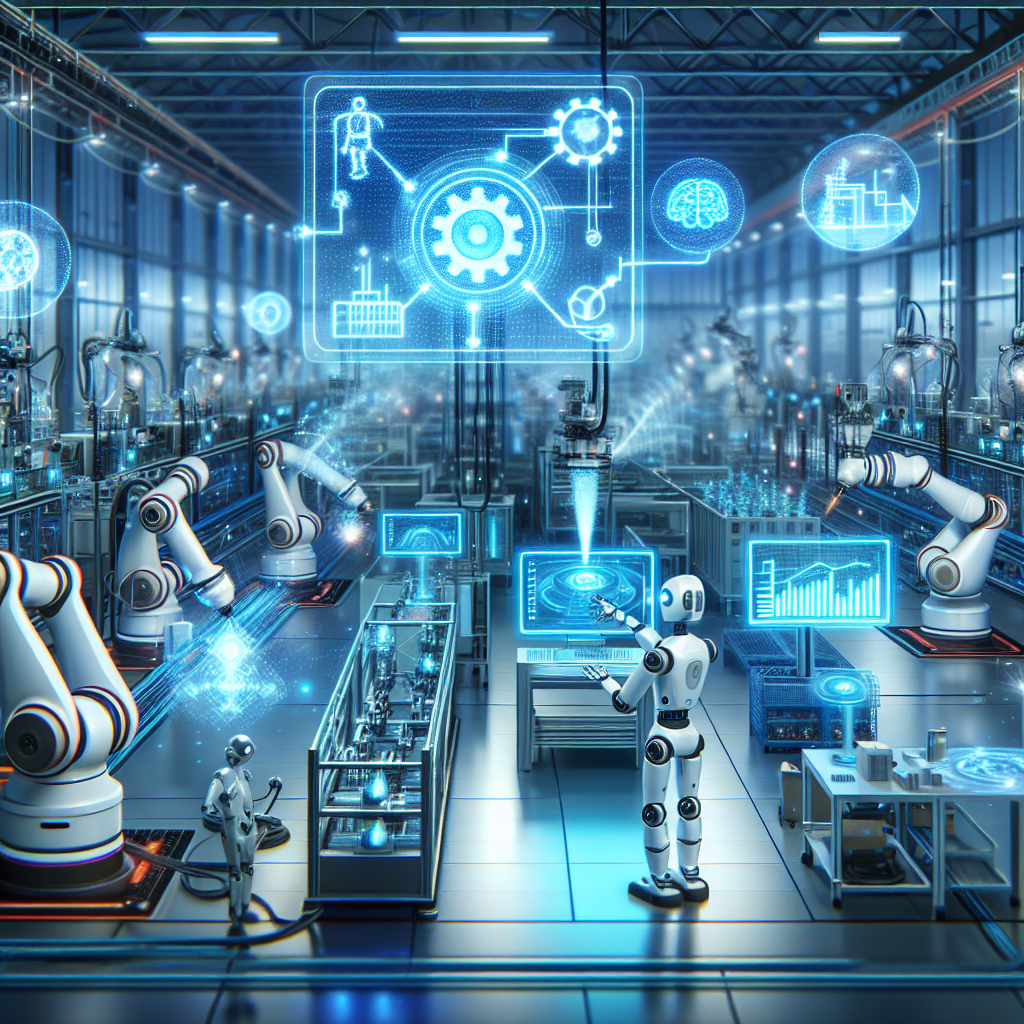AI and Machine Learning in Smart Manufacturing
In recent years, Artificial Intelligence (AI) and Machine Learning (ML) have revolutionized various industries, including manufacturing. The integration of these technologies into smart manufacturing processes has enabled companies to improve efficiency, quality, and productivity while reducing costs and errors. In this article, we will explore how AI and ML are transforming the manufacturing sector and discuss some frequently asked questions about their implementation.
What is Smart Manufacturing?
Smart manufacturing, also known as Industry 4.0, refers to the use of advanced technologies such as AI, ML, Internet of Things (IoT), and big data analytics to create a connected and automated manufacturing environment. This approach allows manufacturers to optimize their production processes, improve decision-making, and enhance overall operational efficiency.
The key components of smart manufacturing include:
1. Data Connectivity: Sensors and IoT devices collect real-time data from machines, products, and other assets on the factory floor.
2. Data Analytics: AI and ML algorithms analyze the data to identify patterns, trends, and anomalies, enabling predictive maintenance, quality control, and process optimization.
3. Automation: Robotic process automation (RPA) and autonomous systems automate repetitive tasks and streamline production workflows.
4. Integration: Smart manufacturing systems integrate with enterprise resource planning (ERP) and supply chain management (SCM) systems to enable seamless communication and collaboration across different departments.
How AI and ML are Transforming Smart Manufacturing
AI and ML technologies are driving the transformation of smart manufacturing in several ways:
1. Predictive Maintenance: AI-powered predictive maintenance systems analyze historical data and sensor readings to predict when machines are likely to fail. This enables manufacturers to schedule maintenance activities proactively, reducing downtime and maintenance costs.
2. Quality Control: ML algorithms can analyze images, videos, and sensor data to detect defects and anomalies in products. This helps manufacturers identify and address quality issues early in the production process, improving product quality and reducing waste.
3. Process Optimization: AI algorithms can optimize production processes by adjusting machine settings, scheduling production runs, and allocating resources in real-time. This leads to higher efficiency, lower energy consumption, and faster time-to-market.
4. Supply Chain Management: AI-powered supply chain management systems can forecast demand, optimize inventory levels, and identify potential risks in the supply chain. This enables manufacturers to improve inventory management, reduce lead times, and enhance customer satisfaction.
5. Human-Machine Collaboration: Collaborative robots, or cobots, equipped with AI capabilities can work alongside human workers to perform repetitive or dangerous tasks. This improves worker safety, productivity, and job satisfaction.
FAQs about AI and Machine Learning in Smart Manufacturing
Q: What are the benefits of implementing AI and ML in smart manufacturing?
A: The benefits of implementing AI and ML in smart manufacturing include improved operational efficiency, reduced downtime, enhanced product quality, lower costs, and increased competitiveness. These technologies enable manufacturers to make data-driven decisions, automate repetitive tasks, and optimize production processes, leading to higher productivity and profitability.
Q: How can manufacturers overcome the challenges of implementing AI and ML in smart manufacturing?
A: Manufacturers can overcome the challenges of implementing AI and ML in smart manufacturing by investing in training and upskilling their workforce, collaborating with technology partners, and developing a clear roadmap for digital transformation. It is essential to involve all stakeholders in the decision-making process and ensure that the technology is aligned with the company’s strategic goals.
Q: What are some examples of AI and ML applications in smart manufacturing?
A: Some examples of AI and ML applications in smart manufacturing include predictive maintenance systems, quality control algorithms, production optimization tools, supply chain management solutions, and collaborative robots. These technologies enable manufacturers to improve efficiency, reduce costs, and enhance competitiveness in the global market.
Q: How can manufacturers ensure the security and privacy of data in smart manufacturing systems?
A: Manufacturers can ensure the security and privacy of data in smart manufacturing systems by implementing robust cybersecurity measures, encrypting sensitive data, and complying with data protection regulations. It is essential to regularly update software, conduct security audits, and monitor network traffic to detect and prevent cyber threats.
Q: What is the future of AI and ML in smart manufacturing?
A: The future of AI and ML in smart manufacturing is promising, with continued advancements in technology and the widespread adoption of Industry 4.0 principles. Manufacturers will increasingly rely on AI-powered systems to automate production processes, optimize supply chains, and enhance decision-making. As AI and ML technologies mature, we can expect to see even greater improvements in efficiency, quality, and sustainability in the manufacturing sector.
In conclusion, AI and Machine Learning are transforming smart manufacturing by enabling manufacturers to optimize production processes, improve product quality, and enhance operational efficiency. By harnessing the power of these technologies, manufacturers can stay competitive in a rapidly changing global market and drive innovation in the manufacturing sector. As the adoption of AI and ML in smart manufacturing continues to grow, we can expect to see even greater benefits in terms of productivity, cost savings, and sustainability.

